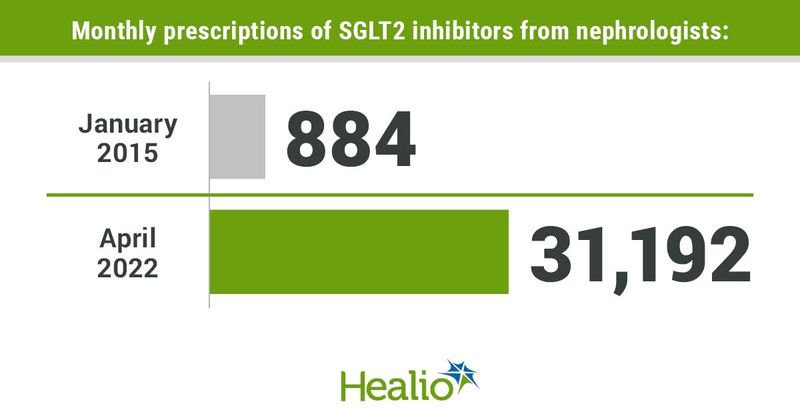SGLT2 inhibitor use increased 35-fold among nephrologists since 2015
ORLANDO — In the 7 years since 2015, nephrologists have showed a 35-fold increased use of SGLT2 inhibitors, according to a presenter at ASN Kidney Week.
However, nephrologists remain responsible for a small proportion of overall SGLT2 inhibitor prescriptions in health care.

Using data from IQVIA’s National Prescription Audit, Rishav Adhikari, MD, and colleagues identified trends in SGLT2 inhibitor use by nephrologists compared with other physicians. Monthly prescriptions were quantified from January 2015 to April 2022, then stratified by prescriber specialty and molecule. Additionally, researchers utilized physician census data from the AMA Physician Masterfile to determine prescriptions per physician.
Overall, monthly prescriptions of SGLT2 inhibitors from nephrologists increased from 884 to 31,192 from January 2015 to April 2022, while monthly prescriptions across all specialties increased from 447,915 to 1,807,389 during that time. In the final 12 months of the study, nephrologists accounted for 21 prescriptions per physician, while endocrinologists, primary-care physicians and cardiologists accounted for 316 prescriptions, 33 prescriptions and 18 prescriptions, respectively.
Further, the main SGLT2 inhibitor used by nephrologists was dapaglifloxzin’s FDA label.

“The main takeaway is that although nephrologists have substantially increased use of SGLT2 inhibitors since the release of favorable renal trials, they still account for about 1% to 2% of total prescriptions,” Adhikari said. “Deploying SGLT2 inhibitors for all the patients who should be on them is going to require a focused and coordinated effort across all the medical specialties that manage patients with cardiorenal disease including, hopefully, an enhanced role for the nephrologist in the future.”

